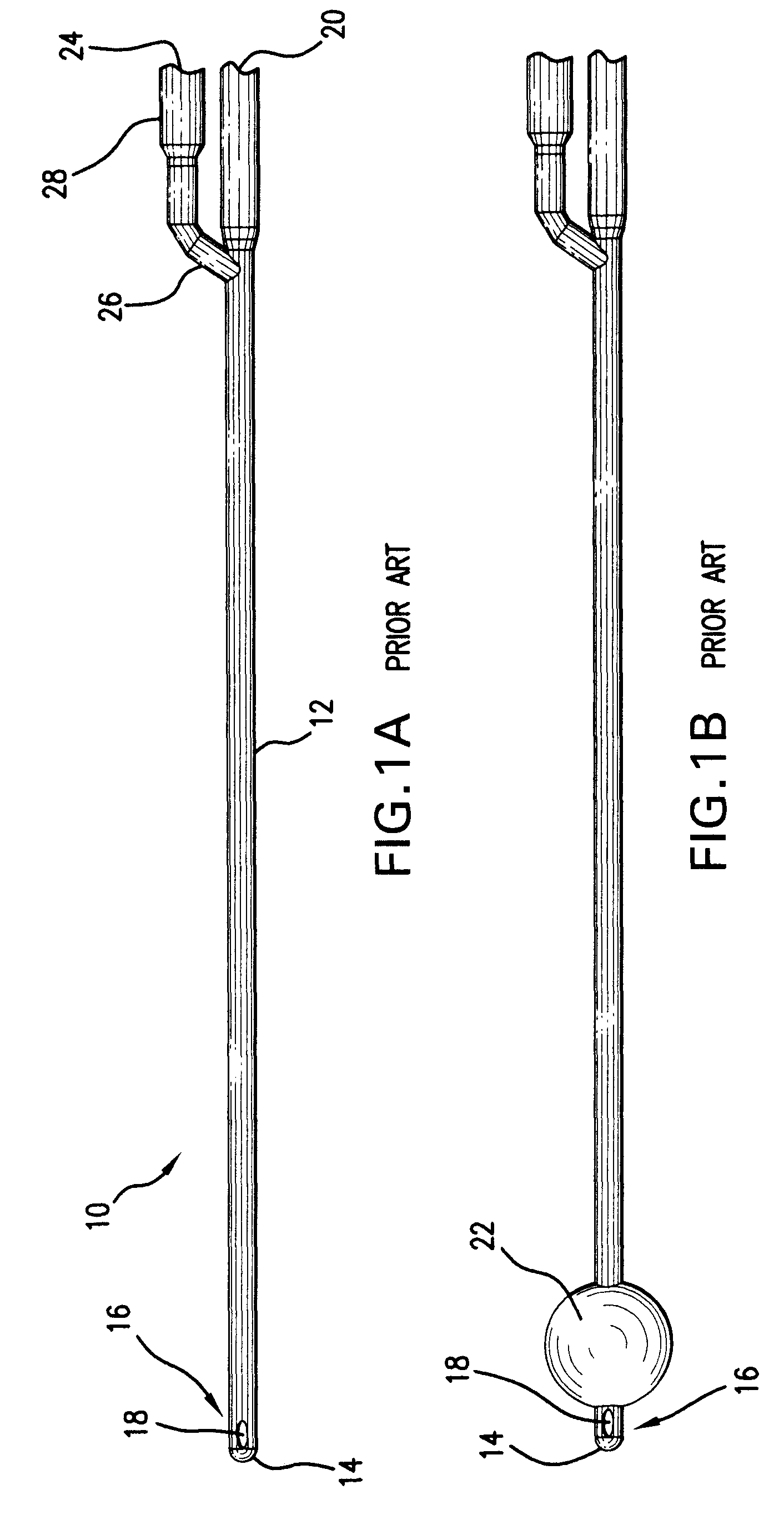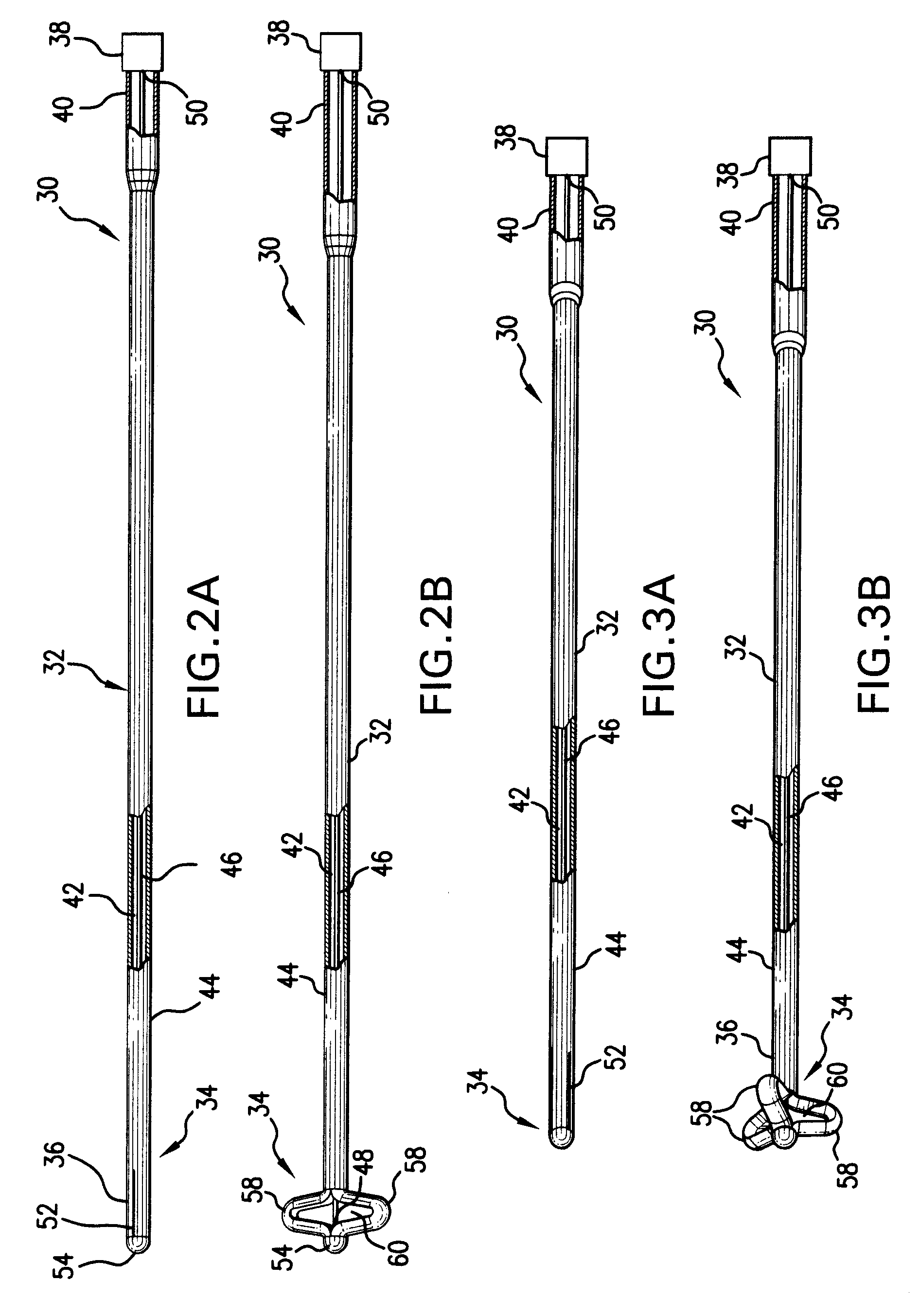Indwelling urinary catheter with self-retaining mechanism
a urinary catheter and self-retention technology, which is applied in the field of surgical devices, can solve the problems of forming blood clots in the bladder, causing discomfort, irritation and pain, and inducing bladder infection, and achieves the effect of convenient control and safe for patients
- Summary
- Abstract
- Description
- Claims
- Application Information
AI Technical Summary
Benefits of technology
Problems solved by technology
Method used
Image
Examples
Embodiment Construction
[0056]Referring to FIGS. 2A-5C, 8A-10B, 12A-12B, 14A-15B, and 17A-17B, the catheter 30 of the present invention includes a tubular member 32, a retaining mechanism 34 at the proximal end 36 thereof, and an activation mechanism 38 at the distal end 40 of the tubular member 32. A channel 42 is defined by the walls 44 of the tubular member 32 and extends between the proximal 36 and distal 40 ends thereof.
[0057]An actuation linkage 46 formed as a wire fabricated from plastic, Dacron, stainless steel, or nylon, is connected with the front end 48 thereof to the retaining mechanism 34 and with the tail end 50 to the activation mechanism 38 in order to transform the retaining mechanism between the “open” and “closed” thereof under the control of the activation mechanism 38 manipulated by a doctor or nurse or other medical personnel administering a procedure.
[0058]The catheter, in its “closed” state, is inserted into the urinary tract, and remains in place for some time, depending on the par...
PUM
 Login to View More
Login to View More Abstract
Description
Claims
Application Information
 Login to View More
Login to View More - R&D
- Intellectual Property
- Life Sciences
- Materials
- Tech Scout
- Unparalleled Data Quality
- Higher Quality Content
- 60% Fewer Hallucinations
Browse by: Latest US Patents, China's latest patents, Technical Efficacy Thesaurus, Application Domain, Technology Topic, Popular Technical Reports.
© 2025 PatSnap. All rights reserved.Legal|Privacy policy|Modern Slavery Act Transparency Statement|Sitemap|About US| Contact US: help@patsnap.com



